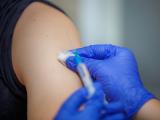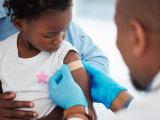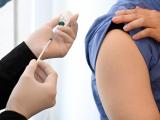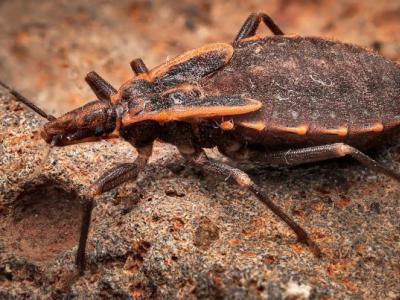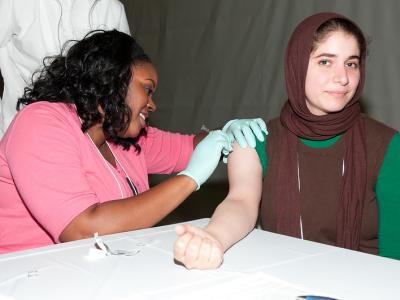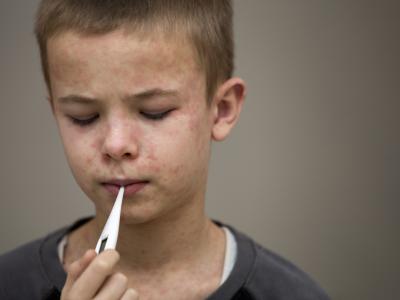Jun 14, 2011
Pandemic H1N1 linked to adverse pregnancy outcomes
Pregnant women who were hospitalized with severe 2009 H1N1 infections had more adverse pregnancy outcomes such as premature delivery and stillbirths compared with healthy pregnant women, according to UK researchers in BMJ. They followed a group of 256 women who were hospitalized during the United Kingdom's second pandemic wave, between Sep 1, 2009, and January 2010. They compared the outcomes with those of 1,220 women who delivered before the pandemic virus circulated. The increased risk of infant mortality was mainly due to a higher stillbirth risk. The investigators also found a statistically significant difference in the rate of preterm births between the two groups. Women who gave birth prematurely were more likely to have been infected during their third trimester, when secondary infections with pneumonia played a role; however, they found that the increased preterm birth risk persisted, even after they accounted for the role of pneumonia. The researchers noted that a similar pattern occurred during the 1918 pandemic, though the effect of seasonal flu on pregnancy outcomes isn't clear. The group concluded that the pregnancy outcome message could reinforce the message of the 2009 H1N1 risks on pregnant women's health. An accompanying editorial said the study's findings underscore the importance of boosting flu vaccination rates in pregnant women.
Jun 14 BMJ study
Jun 14 BMJ editorial
Study identifies close relatives of pandemic H1N1 flu virus
Researchers from The Ohio State University (OSU) used a supercomputer to identify six influenza A viruses very closely related to the 2009 pandemic H1N1 flu, according to a study published in IEEE Transactions on Computational Biology and Bioinformatics. They obtained data on all fully sequenced influenza A viruses available from 1931 through Oct. 15, 2009. They then used a specialized Cray XMT supercomputer to set up a network that captured paths from older to contemporary viruses. "This network gives us an explicit historical and molecular map of how influenza A viruses evolved from several ancestors to modern-day viruses," said co-author Daniel Janies, OSU associate professor of biomedical informatics, in a press release. In looking at commonly traveled paths in the network, the team identified "bottleneck" viruses—the six strains of flu most closely related to 2009 H1N1. "We found that 3,600 out of almost 4,000 paths to pandemic H1N1 were passing through these six bottlenecks," said Shahid Bokhari, an OSU professor of biomedical informatics. Four of the bottleneck viruses were H1N2 strains isolated from pigs in China and Hong Kong from 2005 to 2007. Two other viruses came from a pig in Kansas in 2007 and from an Iowan who worked with pigs in 2005. All of the viruses reassorted with a Hong Kong-based H1N1 strain isolated in 2009 before the pandemic strain emerged.
Jun 13 OSU press release
Prompting employees to commit to flu vaccination time raises uptake
Providing mailings to employees with a prompt for a specific vaccination time increased uptake at a free on-site vaccination clinic by 4.2 percentage points, according to a study in Proceedings of the National Academy of Sciences. Researchers from the University of Pennsylvania, Yale, and Harvard studied seasonal flu vaccination at a free on-site clinic of a large corporation. Employees were divided into three groups: (1) those receiving a prompt to write down the date the employee planned to be vaccinated, (2) those getting a prompt asking for both date and time of planned vaccination, (3) and those not receiving a prompt (the control group). The vaccination rate was 33.1% in the control group, 34.6% in the date-only prompt group (not a statistically significant difference), and 37.3% in the date-and-time prompt group, an increase the authors call "both statistically significant and of meaningful magnitude."
Jun 13 Proc Natl Acad Sci abstract
Experts warn that forest-dwelling dengue could jump to humans
Scientists writing in Nature Reviews Microbiology warn that a strain of dengue called sylvatic dengue that circulates in forest-dwelling primates and mosquitoes may pose a threat to human health as populations expand into African and Southeast Asian forests. "Experiments show that there is little or no adaptive barrier to the emergence of sylvatic dengue into human populations," said lead author Nikos Vasilakis, a University of Texas Medical Branch (UTMB) at Galveston assistant professor of pathology. "In other words, the virus can emerge from its current environment at any time, without further adaptation." The authors also note rapid human population growth near forests that harbor sylvatic dengue. "Of all the viruses with the potential to shift from animals into humans, the most likely to do so are those that, like sylvatic dengue, are carried by the non-human primates and/or bats," Vasilakis said. "For our own good, we need to know as much as we can about this virus."
Jun 13 Nature Rev Microbiol abstract
Jun 13 UTMB press release
North Dakota reports first measles case since 1987
North Dakota's health department yesterday announced its first measles case in nearly 25 years. The illness was confirmed in an unvaccinated man in his 50s from Cass County who was probably exposed to measles on an airline flight, the North Dakota Department of Health (NDDH) said yesterday in a statement. The man was not in North Dakota while he was contagious. Abbi Pierce, head of immunization surveillance for the NDDH, said that the case is a reminder that the disease can occur in the United States, even in North Dakota, which has a measles, mumps, and rubella (MMR) vaccination rate that exceeds the national average. "Measles is a disease that reappears when immunization coverage rates fall, so getting yourself and your loved ones immunized is a safe and effective way to protect yourself against this disease," she said in the statement. So far this year the United States has reported nearly twice the avereage measles cases. Many of the cases have been linked to travel, and 90% of them have occurred in unvaccinated individuals, the NDDH said.
Jun 13 NDDH press release




